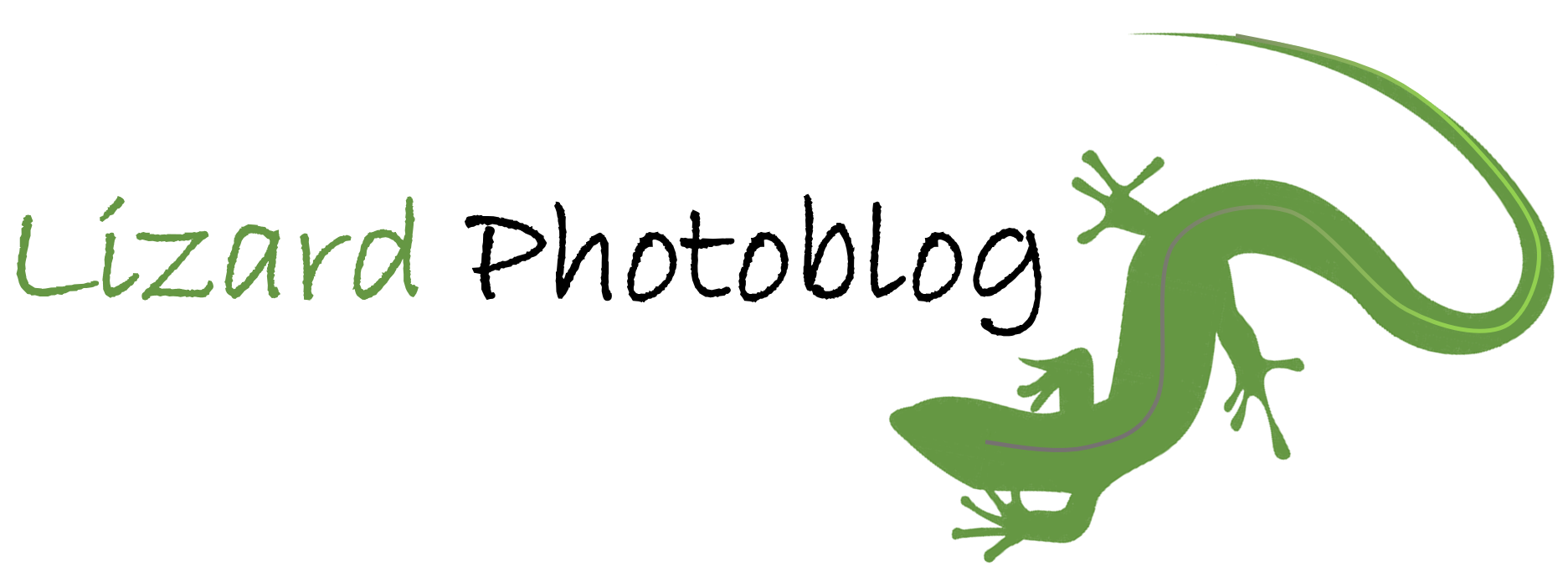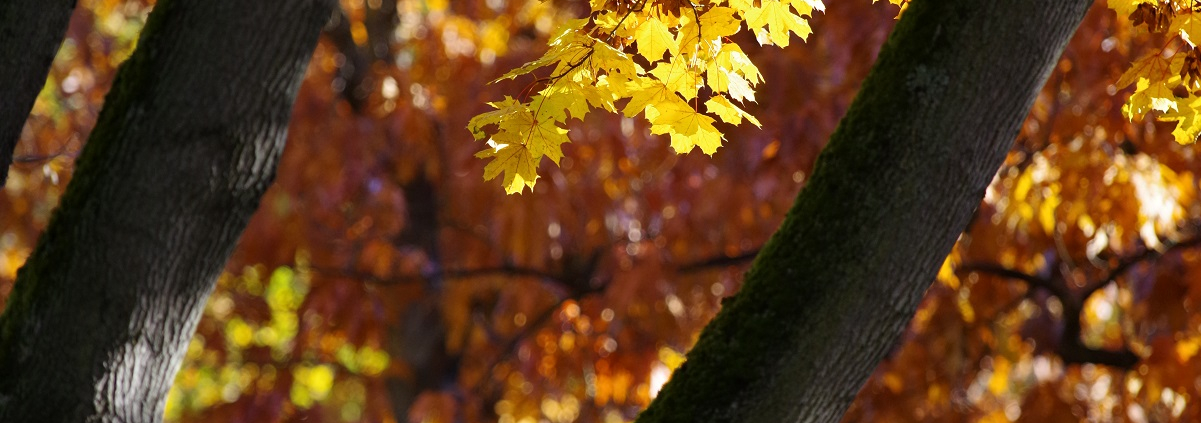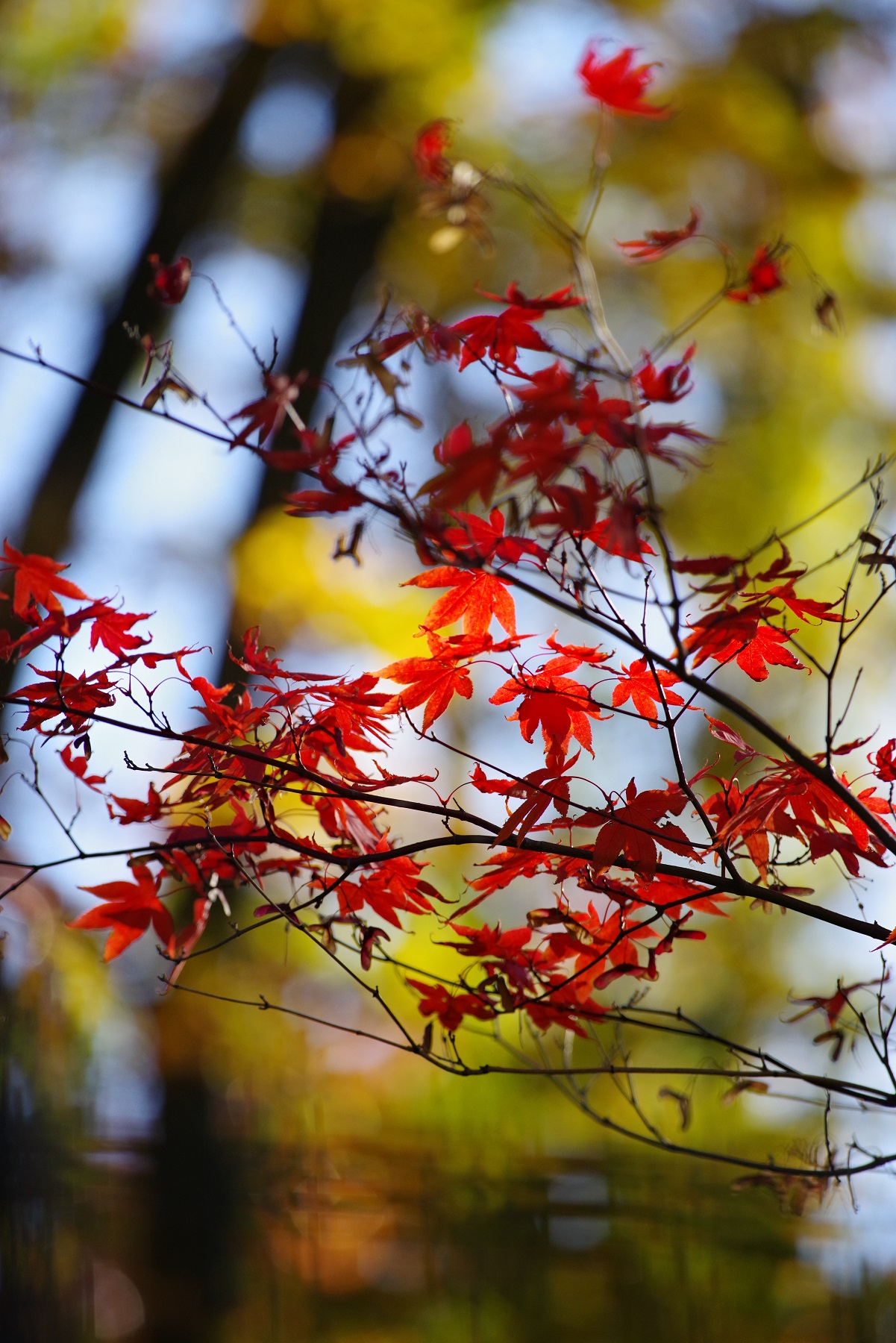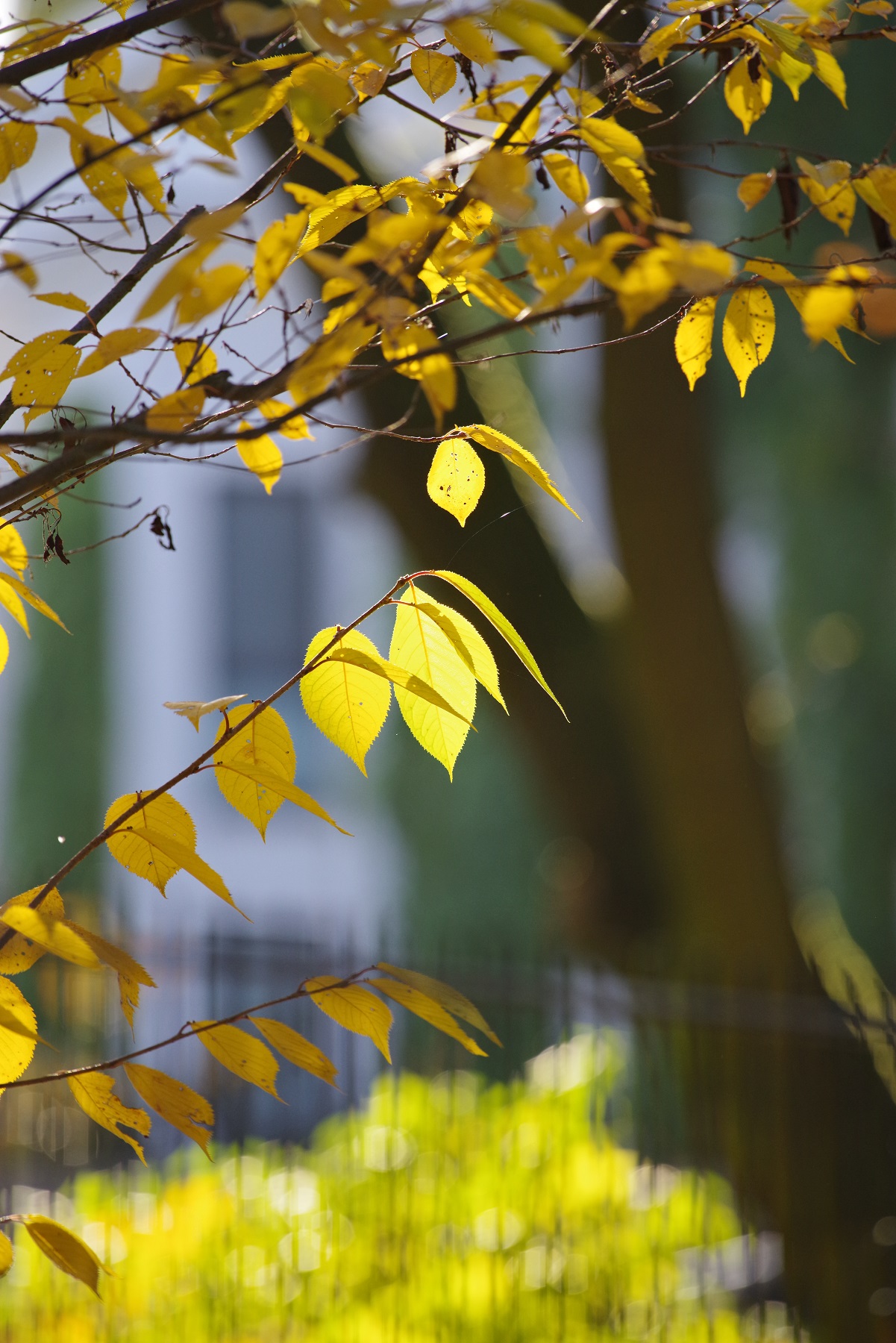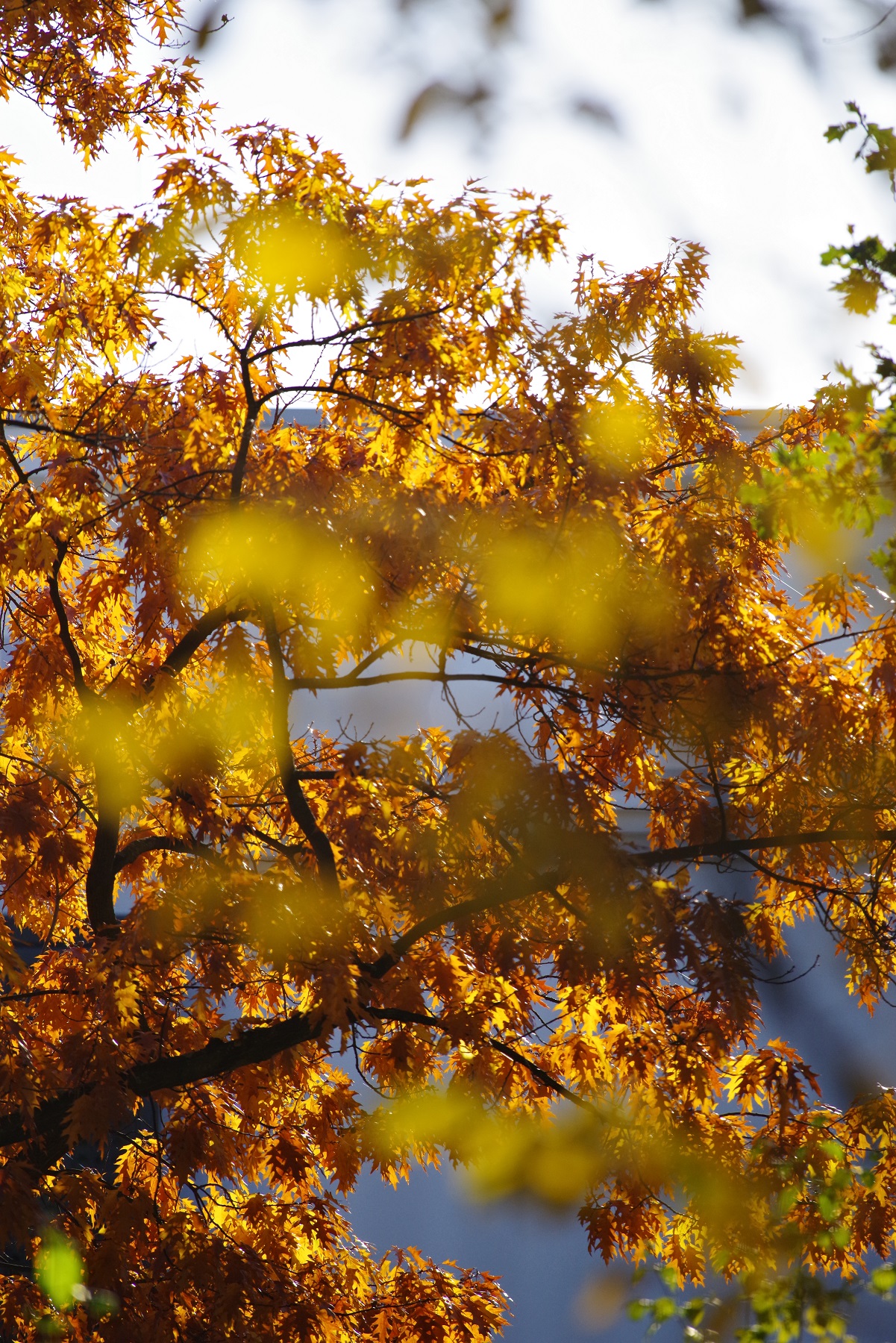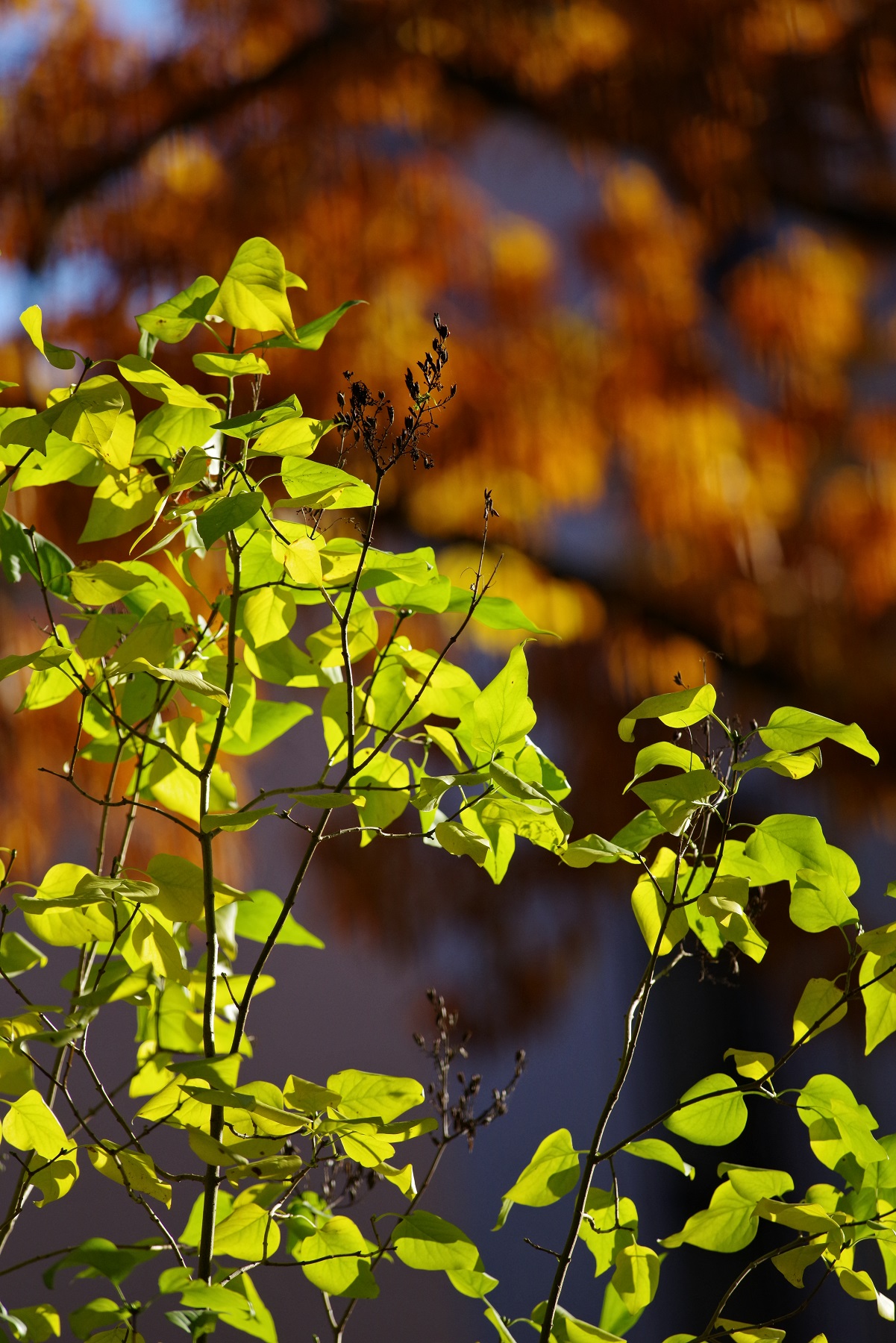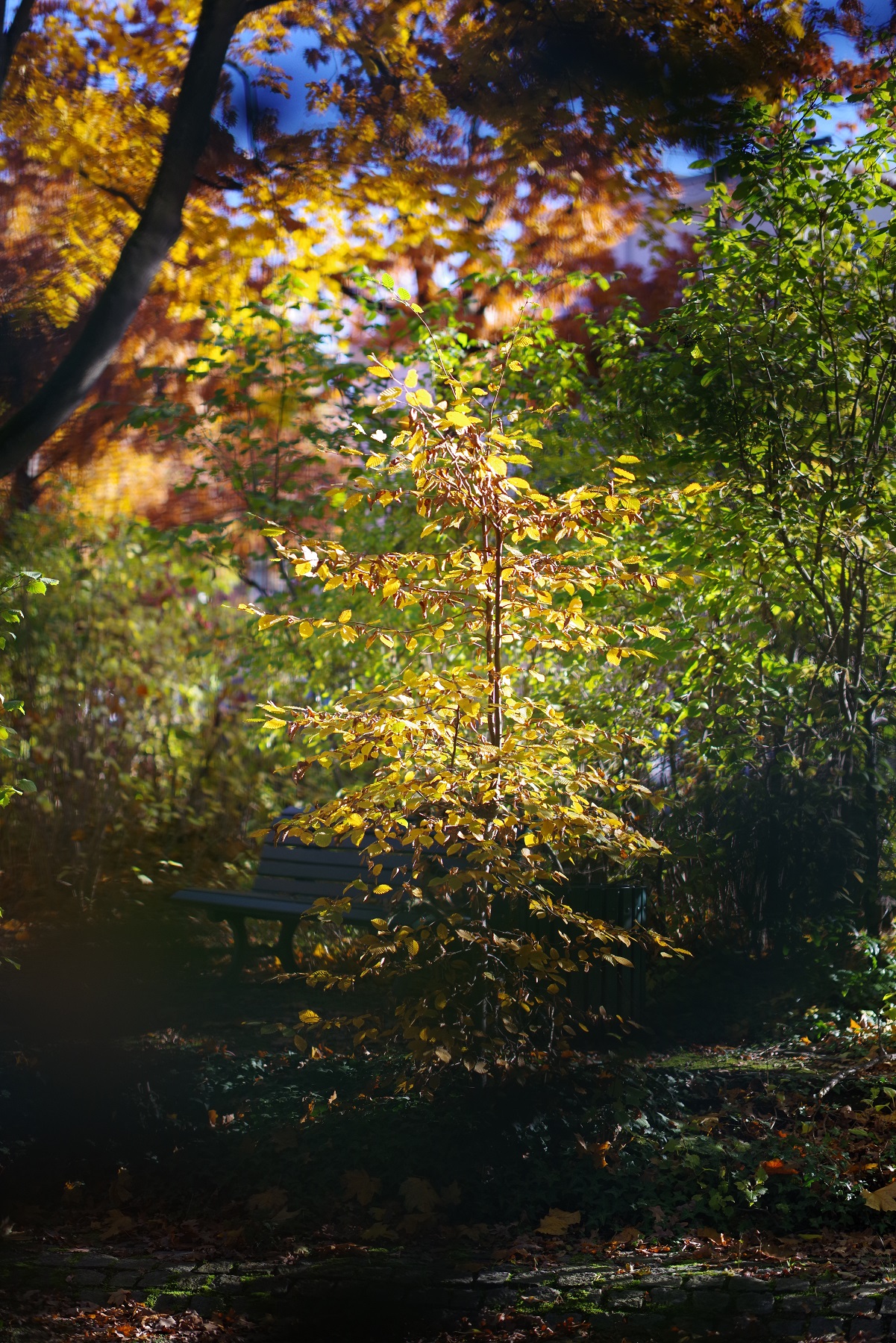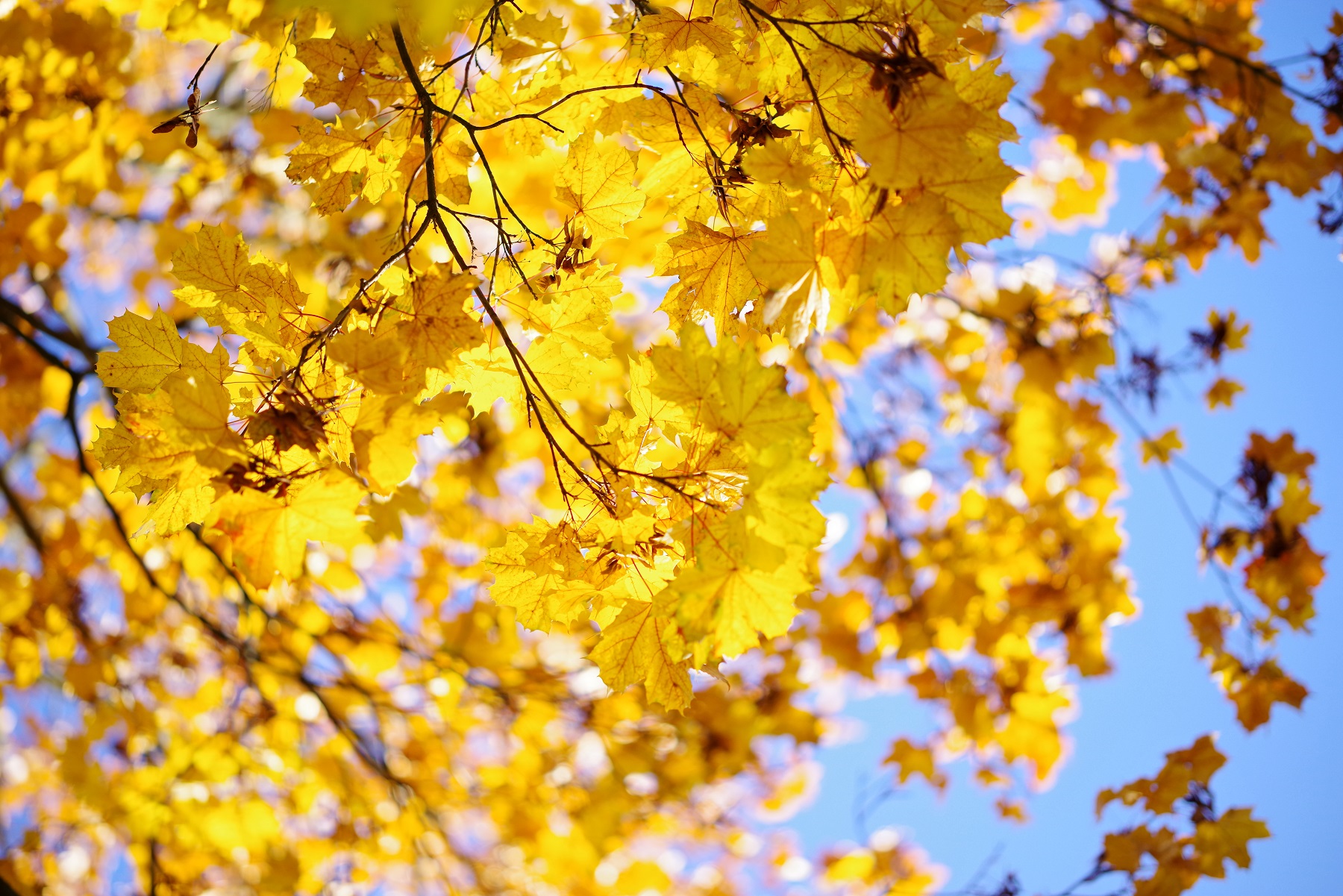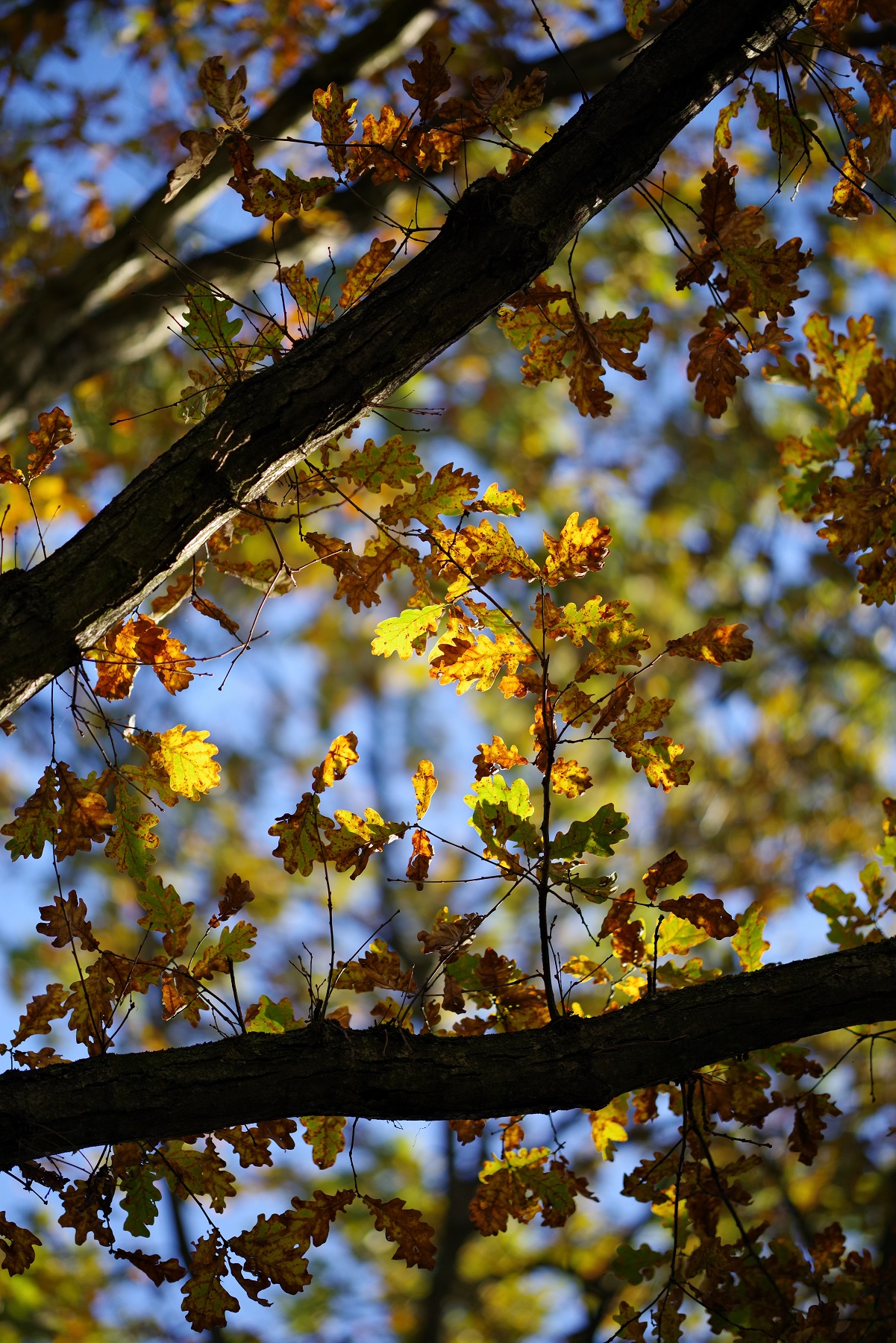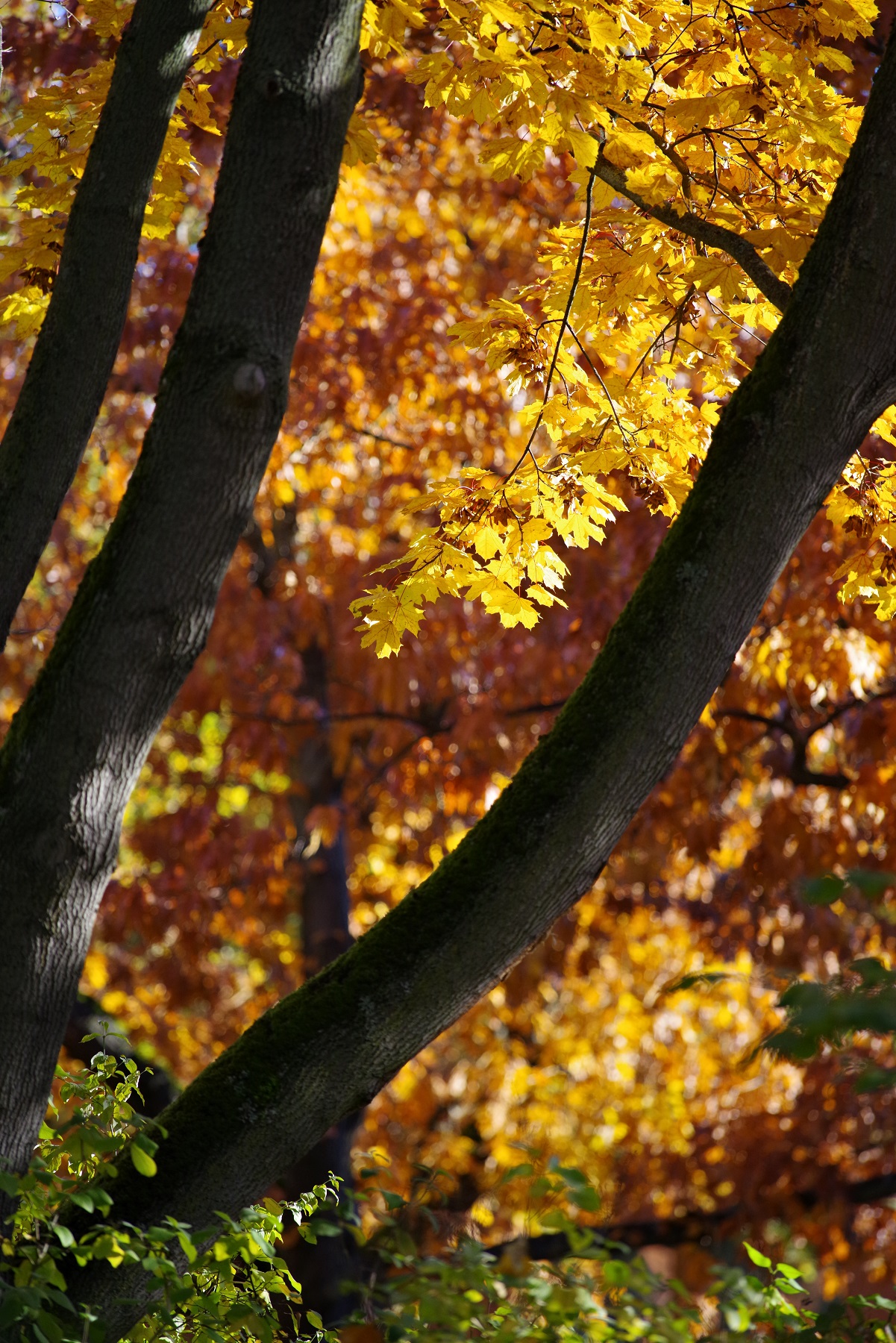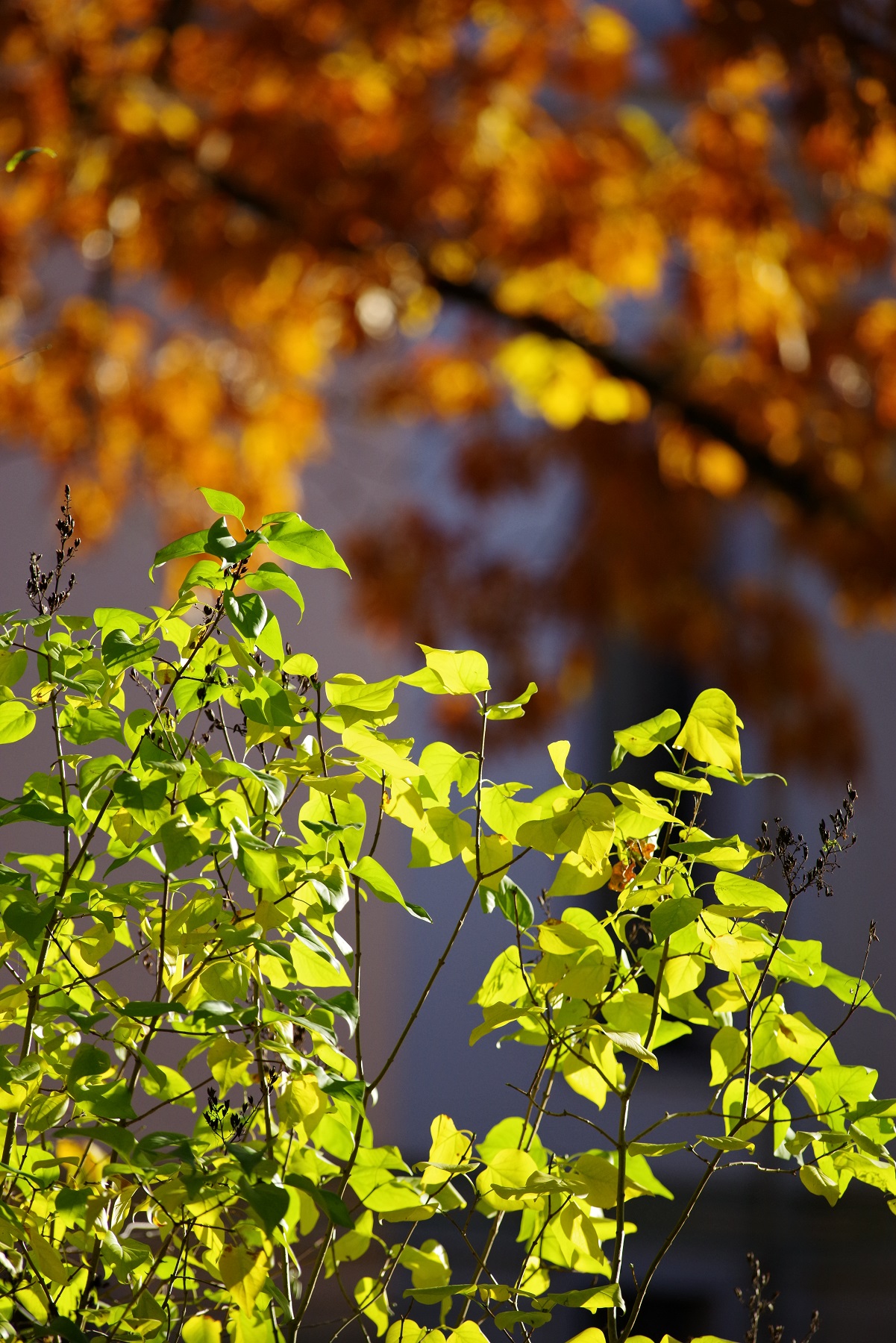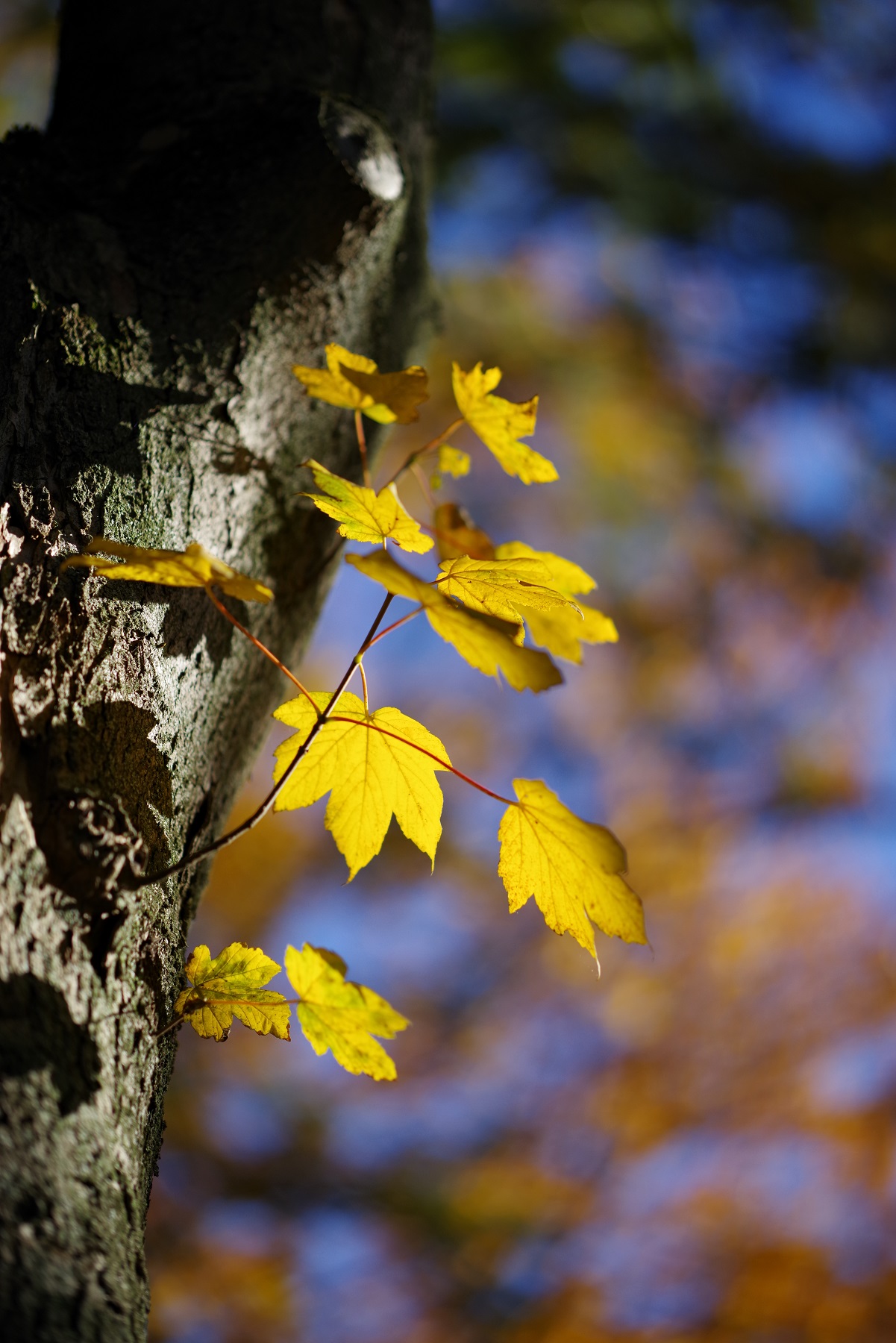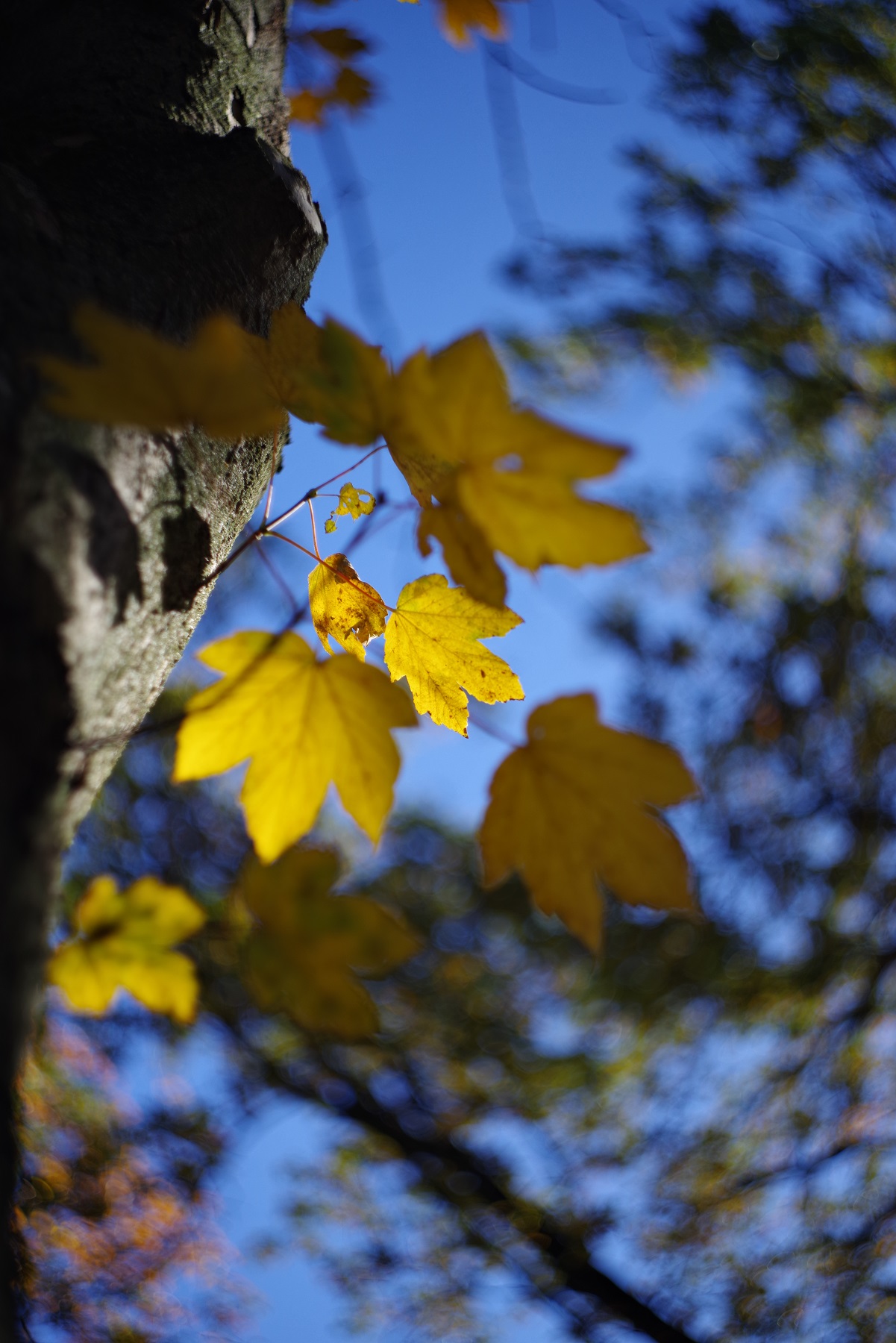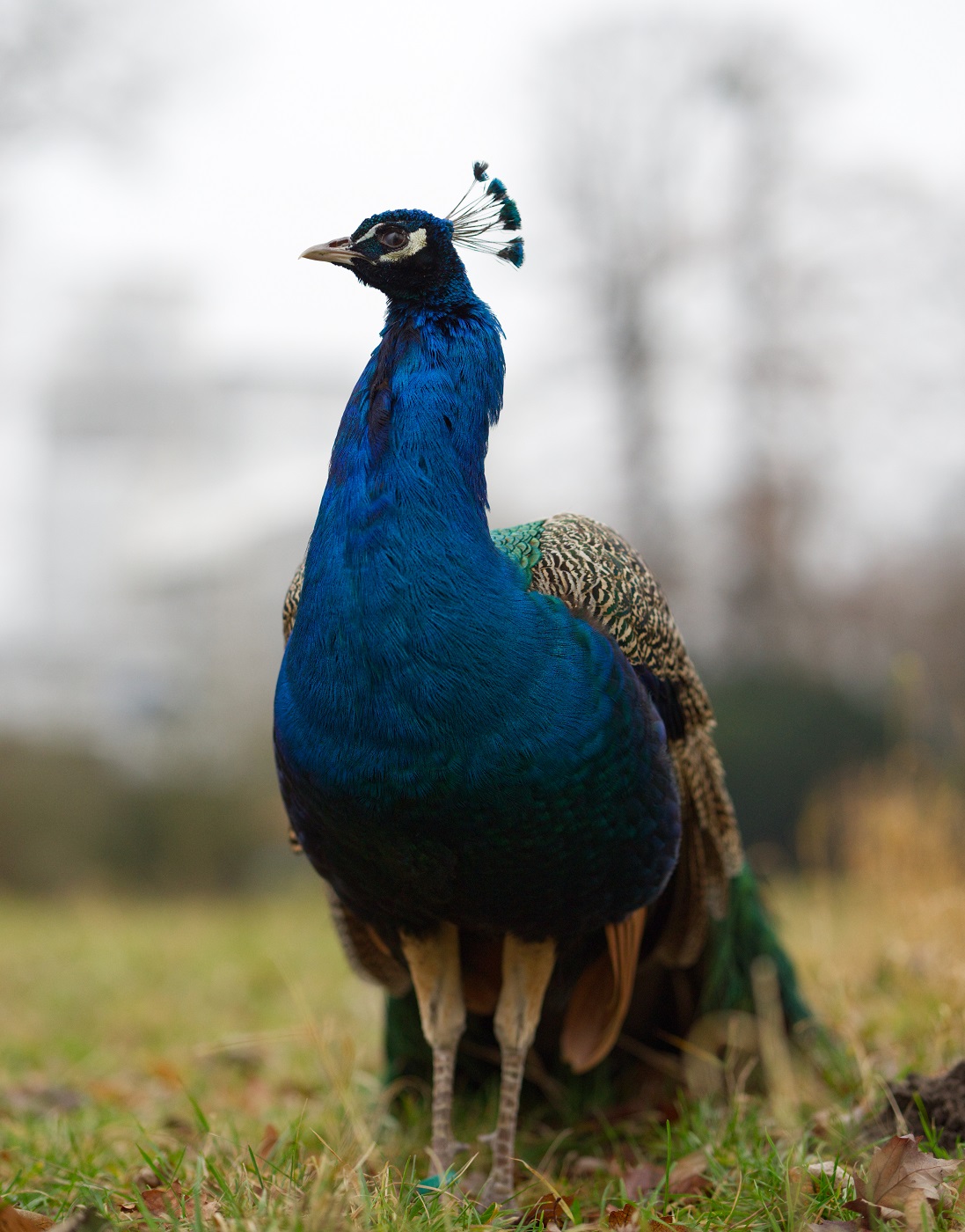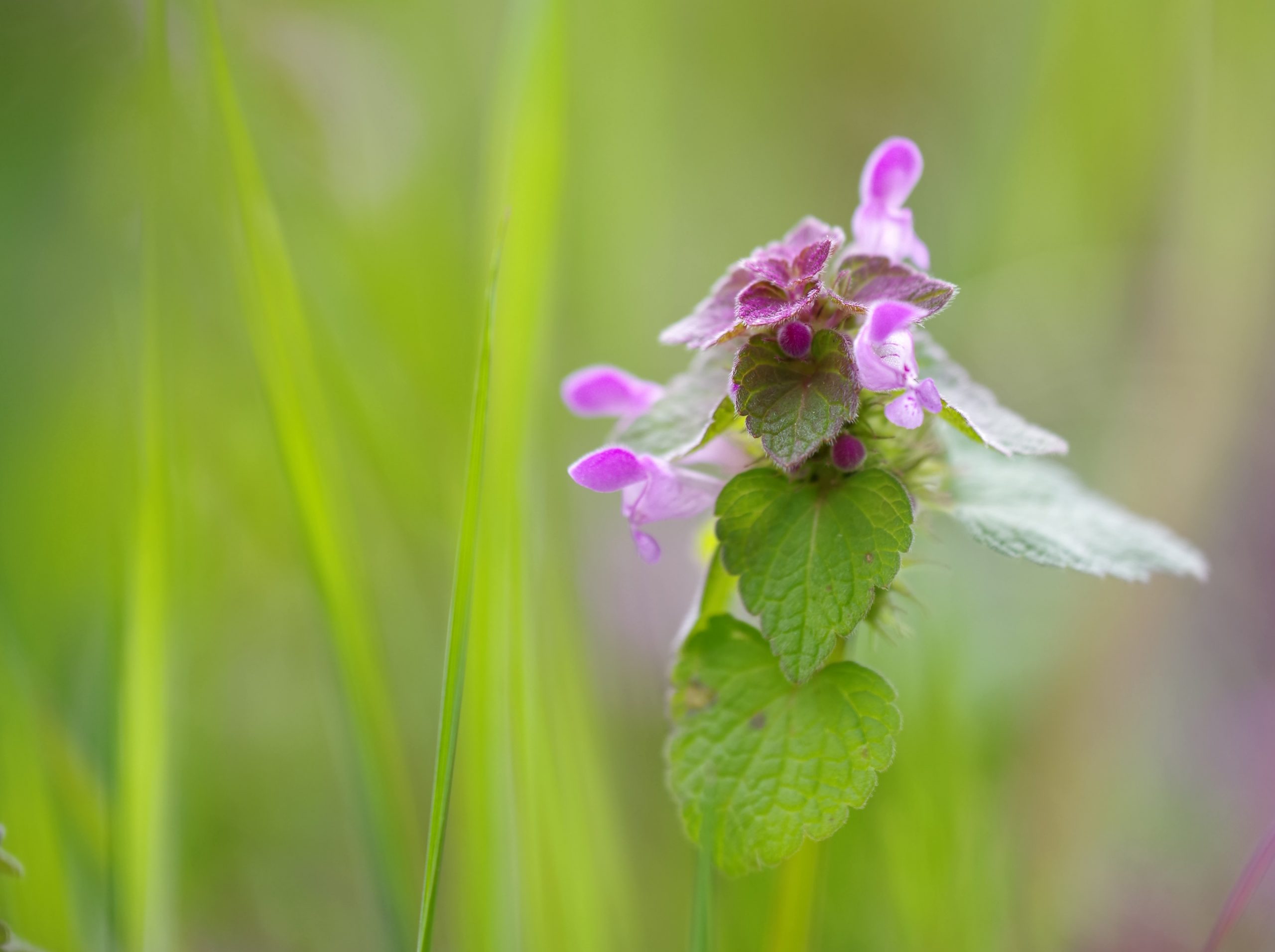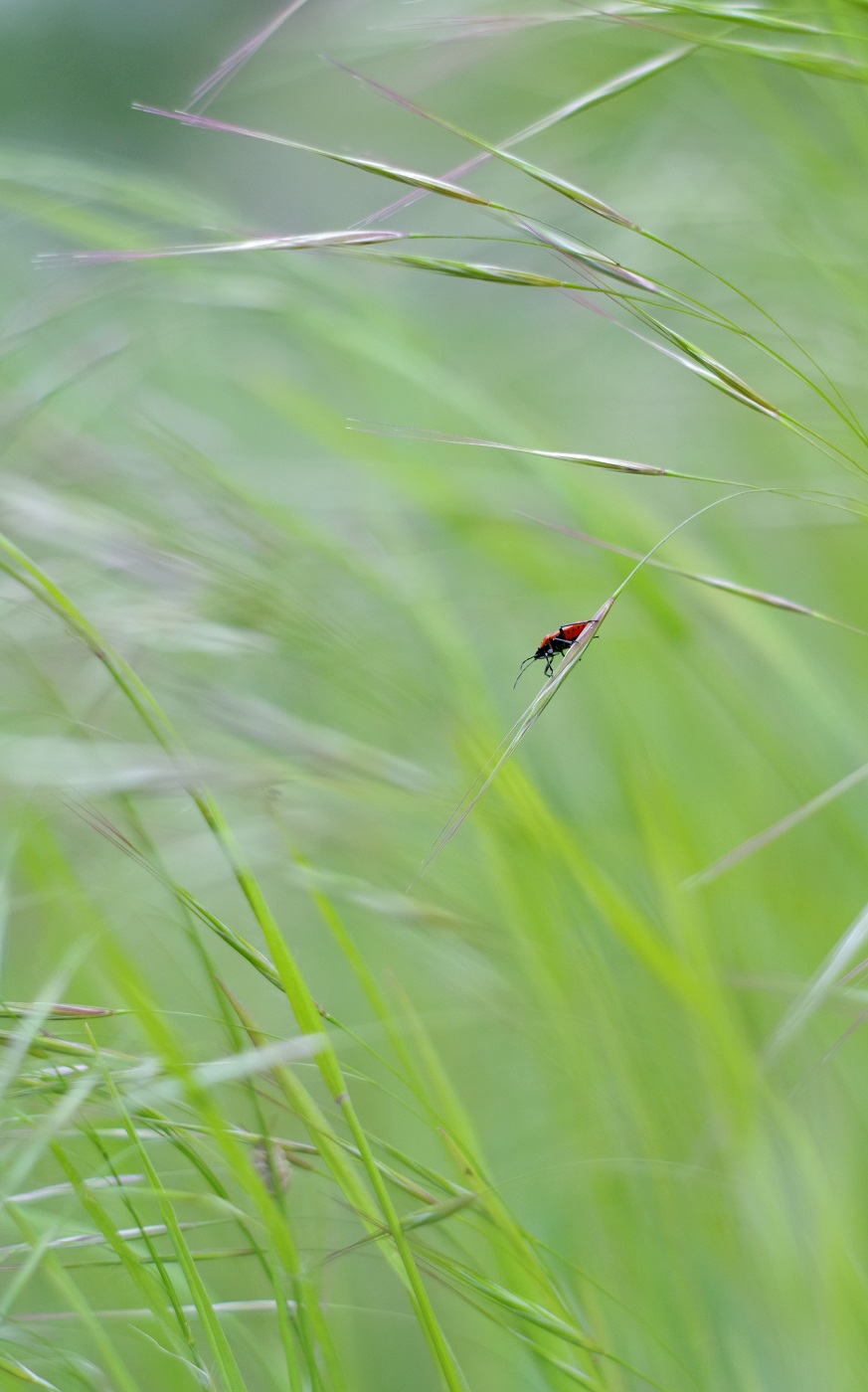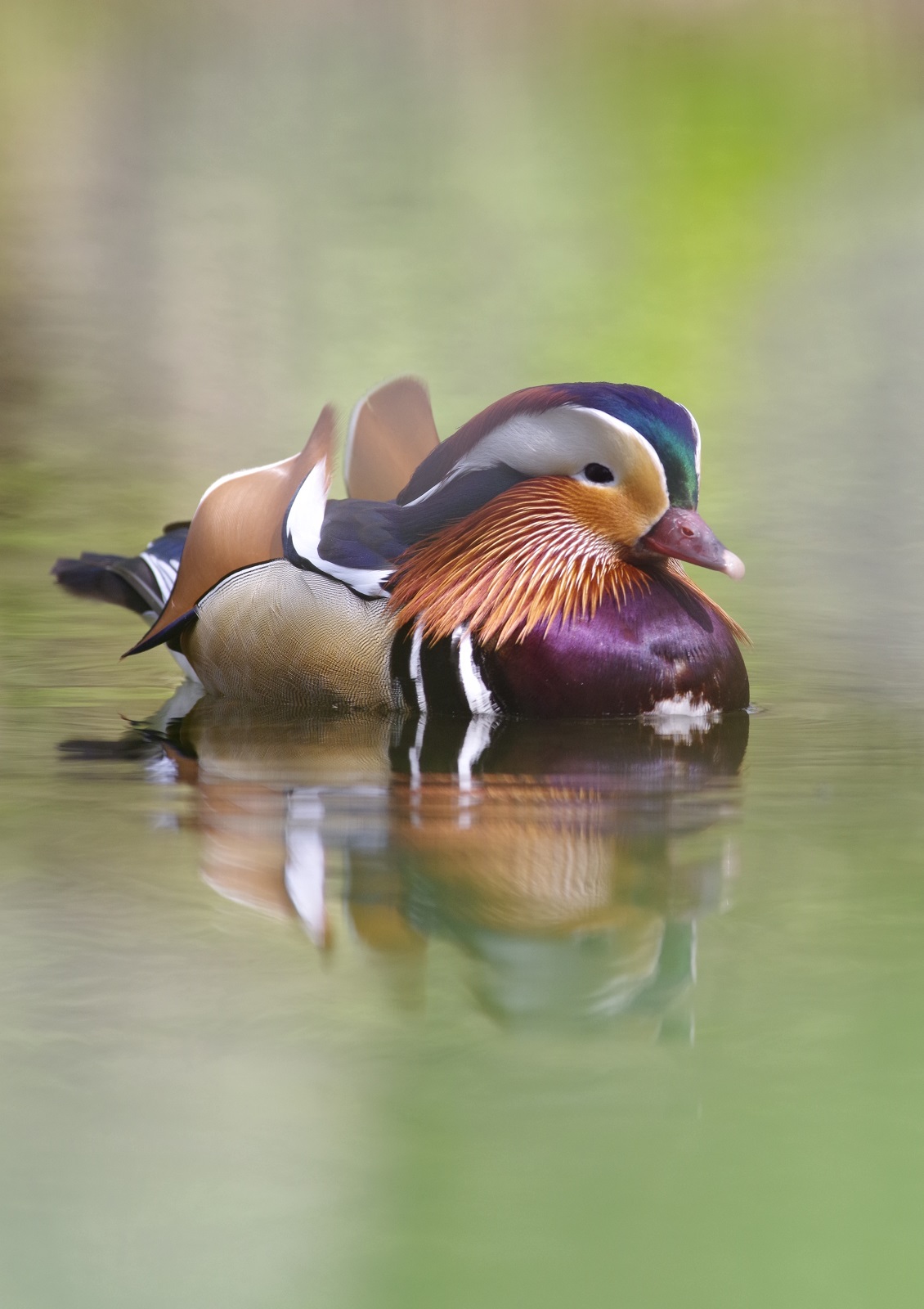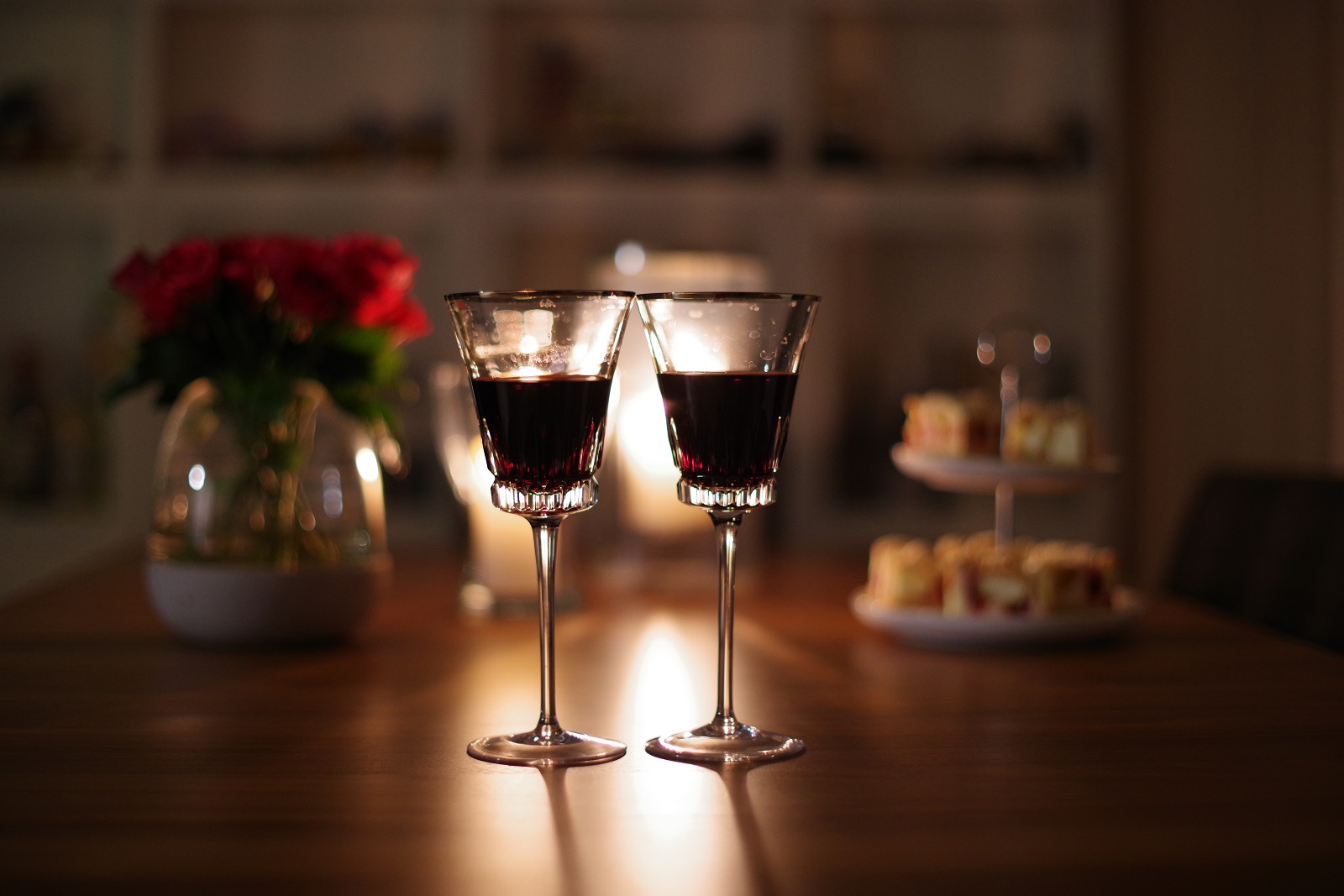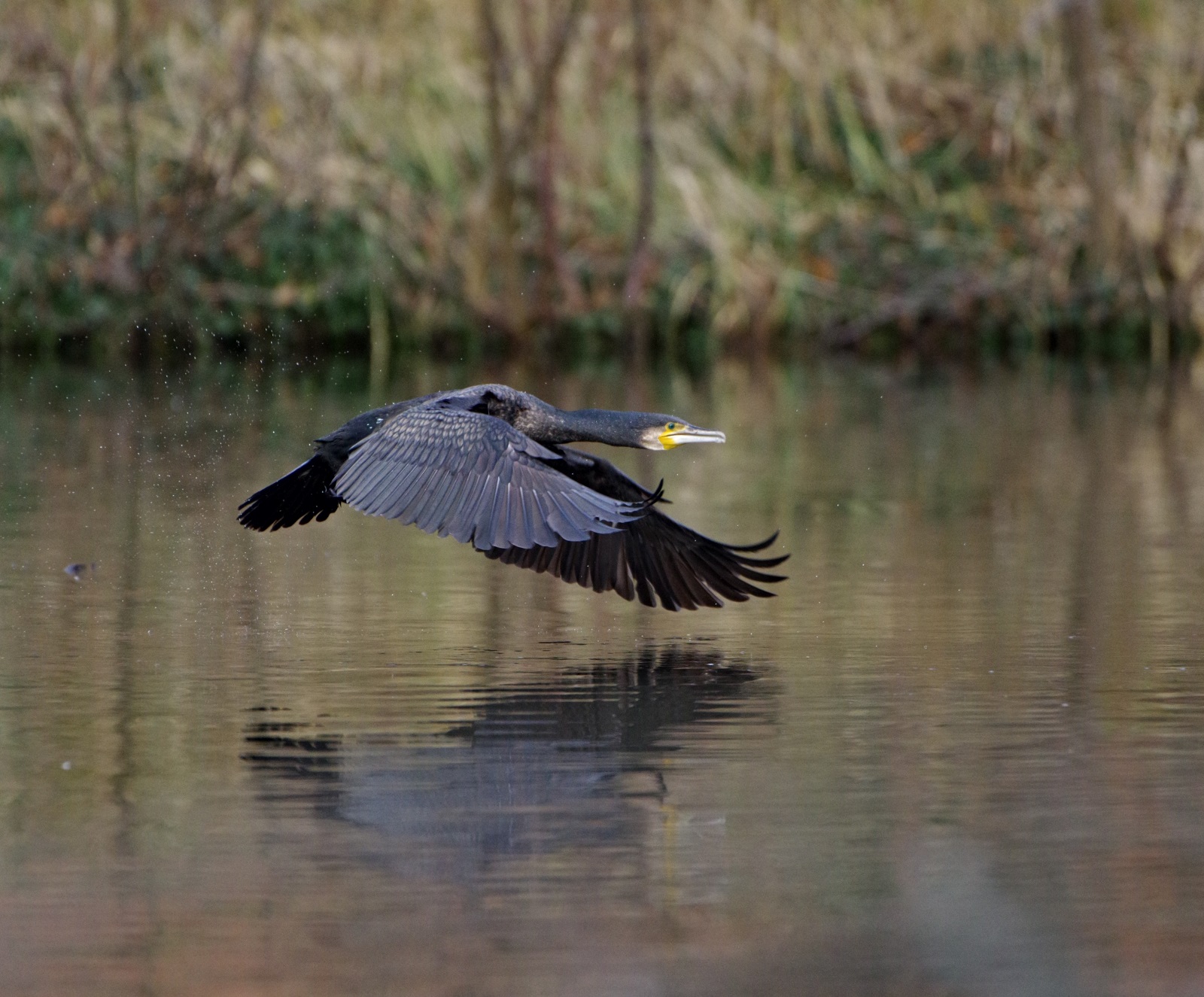Autumn leaves display vibrant colors due to changes in pigments within the leaves. Chlorophyll, responsible for the green color, breaks down as days shorten and temperatures drop. This reveals yellow and orange carotenoids already present. Some trees produce anthocyanin pigments, giving red, purple, and even blue hues, while others stay green. Environmental cues trigger anthocyanin production. The specific colors and intensity vary by tree type and conditions. Fall foliage is a natural spectacle reflecting the changing seasons and tree adaptation to winter.
Photos were taken with the full-frame camera Pentax K1 II using two different lenses: Some pictures are taken with the modern Pentax DFA 85 mm F1.4 and some are taken with the full-manual lens Helios 44m-4 F2.0 (Pentax K Mount) that was imported from Ucraine.
Here we can show the optical difference from both lenses which have a time distance in production of about 40 years:
This picture was taken with the modern lens Pentax DFA 85 mm F1.4. You can clearly see the nice smooth perfect oft bokeh.
And this picture with the Helios 44m-4 from Ucraine. The swirly bokeh looks quite different to the modern lens and has a vintage appearence.
